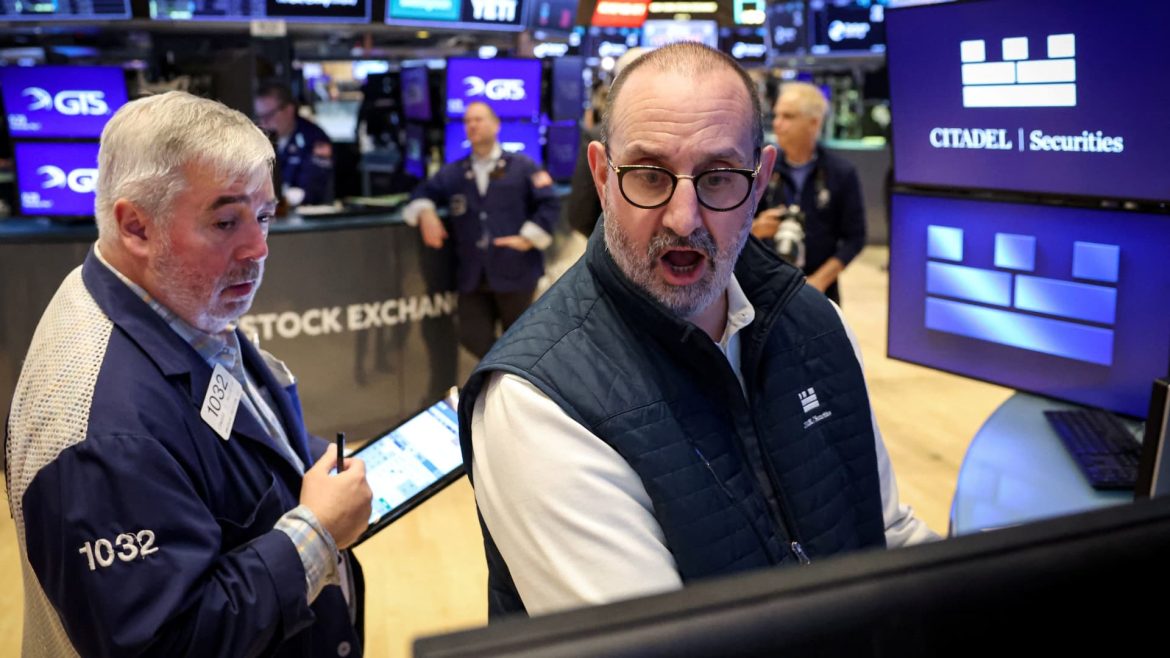The Volatile Dance of U.S. Stock Markets in Early 2025: A Tale of Tariffs and Trade Deals
The first half of 2025 has been a rollercoaster ride for U.S. stock markets, with volatility driven primarily by the ebb and flow of trade negotiations, tariff impositions, and the accompanying geopolitical tensions. The Dow Jones Industrial Average, S&P 500, and Nasdaq-100 have all experienced significant fluctuations, reflecting the market’s sensitivity to these external factors. Let’s delve into the key events and trends that have shaped this tumultuous period.
The Tariff Turmoil
The Escalating Trade War
The year began with a series of escalating tariffs between the U.S. and China, sparking a global trade war that sent shockwaves through the markets. In April 2025, China retaliated against the U.S. with an 84% tariff on U.S. goods, following a 104% U.S. levy on Chinese imports. This tit-for-tat exchange led to a steep sell-off in the markets, with the Dow Jones Industrial Average plummeting by 2,231.07 points, or 5.5%, in a single day—the biggest decline since June 2020 during the Covid-19 pandemic. The S&P 500 also took a significant hit, losing 5.97% in the same period.
Market Reactions to Tariff Announcements
The markets have been particularly sensitive to announcements and reversals of tariff policies. For instance, on May 8, 2025, stocks rose after President Donald Trump announced a trade deal with the UK and hinted at potential tariff reductions on China. This news, coupled with a stronger-than-expected April jobs report, helped calm recession concerns and pushed the S&P 500 to its longest winning streak in over 20 years.
The Impact of Trade Negotiations
The Switzerland Negotiations
A glimmer of hope emerged when the Trump administration announced a “trade deal” with China following negotiations over the weekend in Switzerland. This news sparked a rally in U.S. stock futures, with the Dow Jones Industrial Average futures jumping by 408 points, or 1%. The S&P 500 and Nasdaq-100 futures also climbed by 1.1% and 1.3%, respectively. This positive sentiment was short-lived, however, as uncertainty and lack of concrete details led to subsequent market fluctuations.
The UK Trade Deal
The announcement of a trade deal between the U.S. and the UK on May 8, 2025, provided another boost to the markets. Stocks closed higher following the news, with President Trump’s indication that more deals were on the horizon and that tariffs on China could be reduced. This optimism, however, was tempered by the ongoing uncertainty surrounding the U.S.-China trade negotiations.
Market Volatility and Investor Sentiment
The Rollercoaster Ride
The volatility in the markets has been evident in the frequent swings between gains and losses. For example, the Dow Jones Industrial Average experienced a 400-point drop on Friday, April 26, 2025, as investors awaited much-anticipated trade talks between U.S. and Chinese officials. Conversely, the Dow surged by 2,900 points on April 8, 2025, following Trump’s reversal of tariff policies, highlighting the market’s sensitivity to policy changes.
Investor Uncertainty
Investor sentiment has been heavily influenced by the lack of clarity in trade negotiations. On April 30, 2025, the S&P 500 snapped a nine-day winning run as uncertainty over tariff deals weighed on the markets. Similarly, on May 6, 2025, stocks closed lower as investors awaited new developments on tariffs and the results of the Federal Reserve meeting. This uncertainty has led to a choppy trading environment, with frequent reversals and volatile movements.
The Role of Federal Reserve Policies
Fed’s Influence on Market Volatility
The Federal Reserve’s policies have also played a significant role in market volatility. On May 4, 2025, the S&P 500 rose in choppy trading after the Federal Reserve signaled increasing risks for an economic slowdown and higher prices. This announcement added to the market’s uncertainty, as investors grappled with the potential impact of Fed policies on the economy and stock markets.
The Path Forward
Navigating Uncertainty
As we move forward, the path for U.S. stock markets remains uncertain. The ongoing trade negotiations, potential tariff reversals, and Fed policies will continue to shape market sentiment. Investors will need to navigate this volatile landscape with caution, staying informed about developments in trade talks and policy changes.
The Importance of Resilience
In times of such volatility, resilience becomes a key trait for investors. The ability to adapt to changing conditions and maintain a long-term perspective will be crucial. Diversifying portfolios and staying informed about global economic trends will help investors weather the storms and capitalize on opportunities as they arise.
Conclusion
A New Era of Market Volatility
The first half of 2025 has been a testament to the impact of geopolitical events on U.S. stock markets. The volatile dance of tariffs and trade deals has kept investors on their toes, with significant fluctuations in major indices. As we look ahead, the path forward remains uncertain, but one thing is clear: the markets will continue to be shaped by the ebb and flow of trade negotiations and policy changes. Investors must stay resilient and adaptable, ready to navigate the choppy waters of this new era of market volatility.


